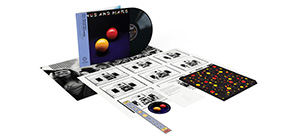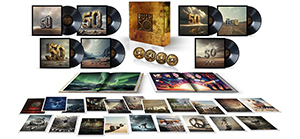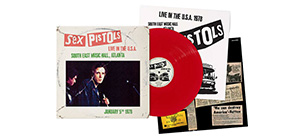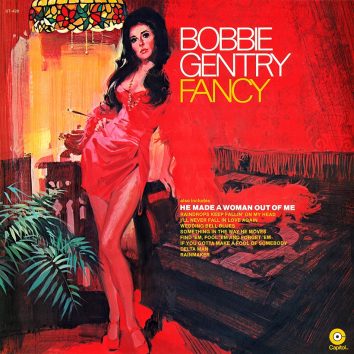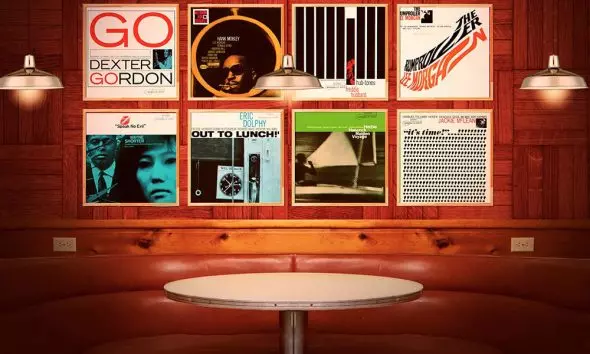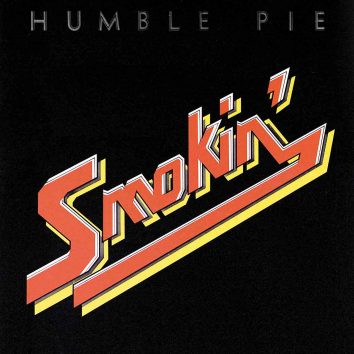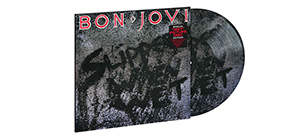The Making Of Tangerine Dream’s ‘Phaedra’
In this excerpt from the liner notes to the anniversary release, Wouter Bessels details the production process of this hugely influential album.
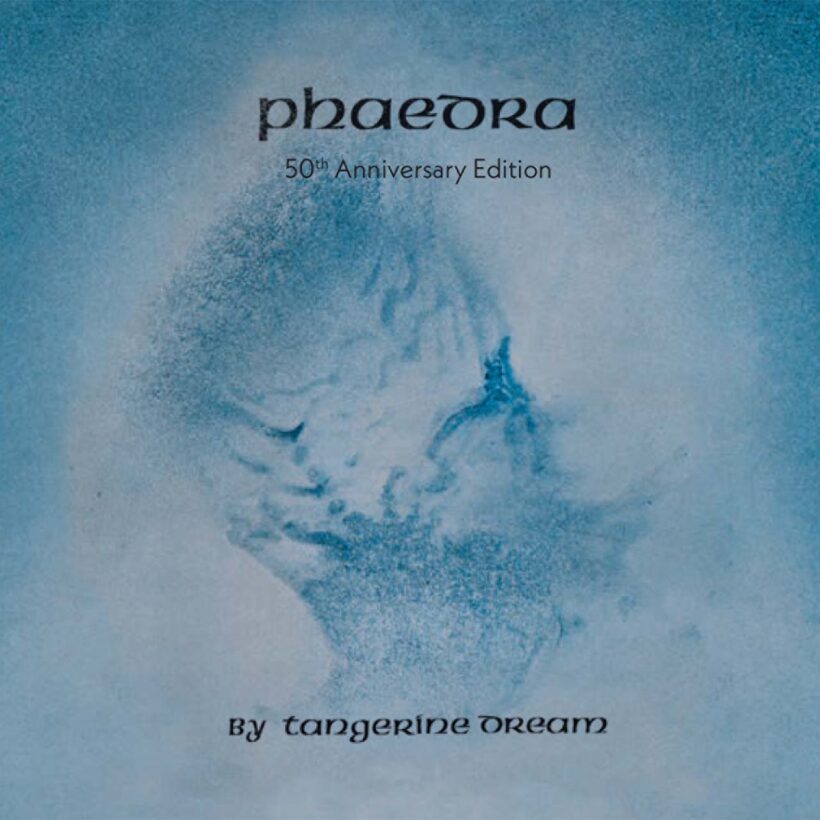
As part of the 2025 anniversary release of Tangerine Dream’s Phaedra, a leading authority on the band, Wouter Bessels, provided extensive liner notes. uDiscover is proud to present an excerpt from these liner notes, which explores the making of this hugely influential album.
The five-year contract that Edgar Froese signed with Richard Branson’s Virgin Records in early September 1973 was a huge turning point for Tangerine Dream. Until then, the band had released four albums for the underground German label Ohr: Electronic Meditation, Alpha Centauri, Zeit, and Atem. These were albums that had seen the band experimenting and developing a new language in improvised music by pushing the boundaries of what their predominantly traditional musical palette of drums, guitar and organ would allow. Tangerine Dream remained very much a cult band, known only to a few open-minded listeners. Signing to the recently established Virgin record label presented an opportunity for the band to define their sound using the latest developments in electronic musical instruments and studio technology, whilst experiencing the status and exposure a label like Virgin could provide. Their formative years were completed.
By the time of their signing to Virgin, the line-up of Tangerine Dream had stabilised as Edgar Froese, Christoph Franke and Peter Baumann, who had been working together since June 1971. While this trio’s debut work Zeit (1972) was a minimal, abstract and atmospheric work, their follow-up Atem (1973) saw the band spending more time structuring and refining their material. Influential British DJ John Peel proclaimed Zeit as Album of the Year on his BBC radio show and his enthusiasm paved the way for the group to gain more attention. Ironically, by late 1973, interest and exposure for the band in Germany was relatively minimal compared to the UK, France or Austria.
“People who associate us with electronic music have possibly forgotten that the hardware was just a bridge to reach our musical goals,” Froese told Totally Wired in 1986. “I still think that even without all that stuff, we are still able to use our imagination and follow our fantasies; if you lose your imagination, then you cannot create anything – even if you’ve got the most expensive computer in the world.” Franke added: “Electronics were just one possible way to go. If some genius created a better Mellotron, maybe we’d just use acoustic bits and pieces. We didn’t have to have the electronic synthesiser to create that style; the idea was there and then we looked for the instruments. Today kids get an instrument and see what they can do with it. Then they look around and start to copy, which is okay to start. We were in the position that we didn’t have anyone to copy. We started from scratch.”
Indeed, Tangerine Dream applied exactly this approach in November 1973 when the band entered Virgin’s Manor studio in Shipton-on-Cherwell, Oxfordshire. Whilst the band flew into London’s Heathrow Airport, a truck full of their equipment was driven from Berlin. Assisted by engineer Phil Becque, the band settled into the rural studio to record many hours of material during the next two weeks.
Conventional instruments such as a guitar, bass guitar, organ, flute and grand piano were electronically treated to make them sound alien and different. In addition, each band member used a VCS3 or Synthi-A/AKS synthesiser, Froese utilised a Mellotron M-400, Baumann a Fender Rhodes electric piano and Franke a Modular ‘Big Moog’ synthesiser, recently acquired from Bruce Hatch, an electrical engineer living in San Francisco for a reported $15,000.
“The Moog 960 Sequential Controller had access to every note and allowed improvisation by manipulating the controls as it played,” Franke told Sound On Sound in 1994. “I used it for two years, but because each note was set by a tuning knob, you couldn’t go up and down the pitch, as it was step-less. My idea was to quantise the pitch and timing by having lots of switches, three marked 1‑12 for semitones and fractions and one from 1‑8 for octaves. Then we built a programmer, as we had a lot of Moog sequencers, and we could then play one sequencer for four bars, another for eight and so on.”
“Richard Branson said we could come over to record in Oxford, where he’d got a recording studio,” Baumann told DJ Magazine in 2019. “It was in a really nice country manor. But when we arrived, there was nobody there. We finally found everybody – they’d been eating hash brownies and were watching movies in the basement. They could barely show us our rooms, but we settled in and began working the next day. We started recording, and then it was 12 hours later. ‘Phaedra’ was the first track. Christoph had just got a Moog sequencer and was noodling around on it. I was with Edgar in the recording booth and said, ‘This sounds cool, let’s record it’. I was doing most of the mixing, so I was instrumental in beginning ‘Phaedra.’ I would take a lot of reverb and send the reverb onto delays and back through other delays. It was all very atmospheric.”
Each day the band improvised music, but very little of the material committed to tape satisfied the group. Edgar Froese recalled the frustrations of these early sessions in a 1994 interview: “Phaedra was the first album in which many things had to be structured. The reason was that we were using the Moog sequencer (all driving bass notes) for the first time. Just tuning the instrument took several hours each day, because at the time there were no pre-sets or memory banks. We worked each day from 11 o’clock in the morning to 2 o’clock at night. By the eleventh day we barely had six minutes of music on tape. Technically everything that could go wrong did go wrong. The tape machine broke down, there were repeated mixing console failures, and the speakers were damaged because of the unusually low frequencies of the bass notes. After twelve days of this we were completely knackered.”
Fortunately, things improved, and the band eventually managed to capture the dazzling title piece that eventually comprised the whole of the first side of the album. The first half of the piece was underpinned by a sequencer rhythm, a first for the band, but something that became a characteristic of the band’s Seventies work (and beyond). However, as the piece unfolded a ghost in the machine saw the Moog gradually shifting out of tune, which gave the track an incredible sense of urgency and unhinged momentum. Not for the first time the technology took on a life of its own. As the sequencer finally reached a peak and spluttered into silence, the second half of the piece returned the band to its earlier approach of creating cosmic textures with clusters of atmospheric sound, before closing with a Froese’s moving Mellotron chords, as he moved though the instrument’s choir and strings settings. The sound effects coda of the sound of children was added during the mixing of the album since it did not appear on the multi-track tape. This may have simply been a pragmatic decision to increase the side length by an extra minute, since the music itself barely runs to 16 minutes. Nevertheless, it made an appropriately haunting ending to the first side of the album.
Returning to The Manor in early December 1973 to try to complete the second side of Phaedra, the piece “Movements of a Visionary” was a more controlled and sedate collective improvisation, while “Mysterious Semblance at the Strand of Nightmares” and “Sequent C” were solo pieces by Edgar Froese and Peter Baumann respectively. The former is essentially Froese exploring the possibilities of his recently acquired Mellotron, treated with various phasing effects, while the latter is an extract from a longer piece Baumann improvised to tape using a wooden recorder (not a flute as it is often credited), overdubbed several times and fed through multiple delays to create an elegiac coda to the album.
Phaedra would come to be regarded as a classic and a watershed moment in the history of electronic music. Along the way there were many hours of improvised studio session material that was rejected and left in the vaults, the best of which is now newly mixed and presented in this box set for the first time.




